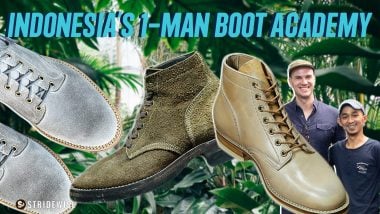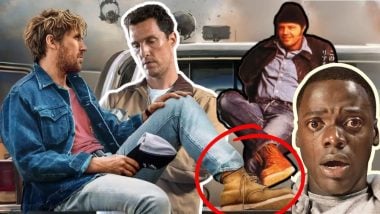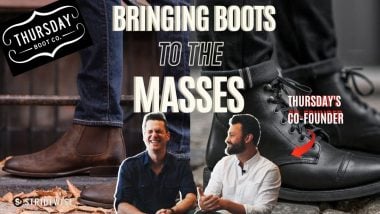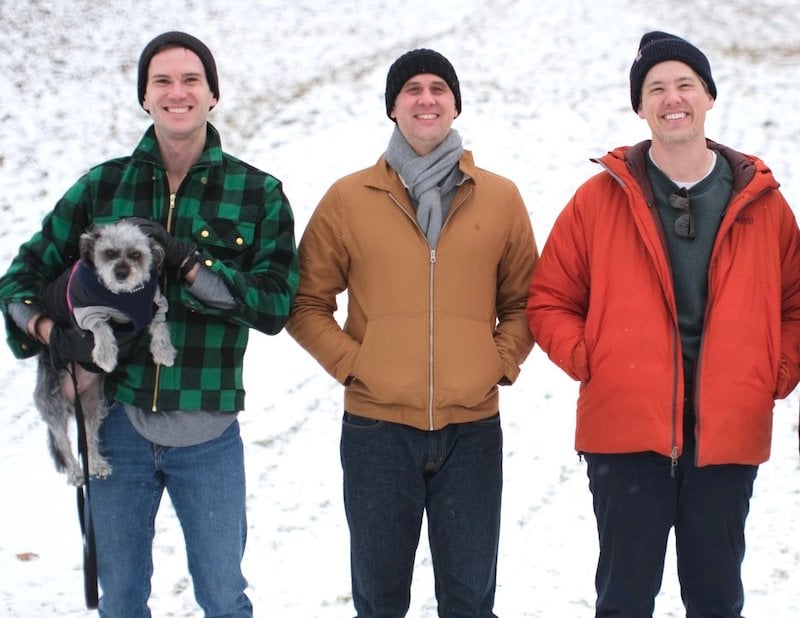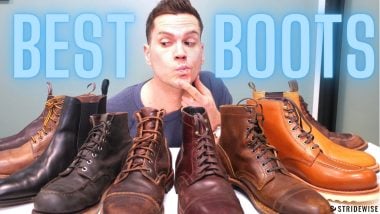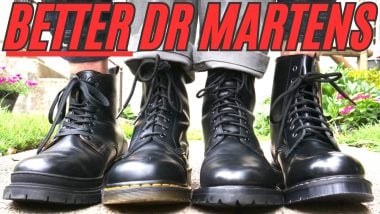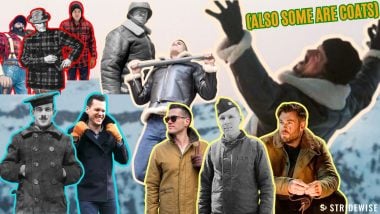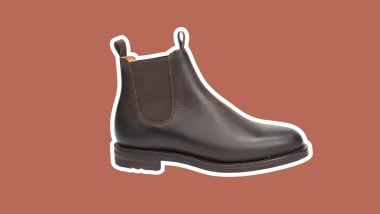How I Quit My Job and Became a Bootmaker
Have you ever dreamed of walking away from office life to start fresh in a quiet workshop, working with your hands and building something lasting?
For many boot enthusiasts, the fantasy goes like this: you stand up from your desk, slide the laptop into the trash, walk out the door, and start a new life as a shoemaker. An honest life. How hard can it be? Daniel Day-Lewis did it!
I’ve visited enough factories and made enough boots (one) to know that making great footwear is easier said than done. But when I met a man who did exactly that, I decided to visit his one-man workshop in Pennsylvania and ask him what happened.
Meet Dave Corey, sole employee of Old Speed Manufacturing in Media, Pennsylvania.
Why Dave Became a Bootmaker
Stridewise (SW): You quit your job to become a shoemaker. Walk me through it — what were you doing before?
Dave: I’d done automotive repair, sold things on eBay, home improvement, a little leatherwork, and tailoring. I even have a computer science degree that I never used. In one way or another, almost all of my jobs have involved working with my hands.
SW: It’s actually not surprising that there’s a common theme of “engineering” in your resume, I’ve found it to be a super common element when I’ve interviewed self-taught bootmakers. There’s more STEM in shoemaking than most people realize: managing structural integrity, load dispersal, and so on.
But how did you go from being interested in boots to becoming a bootmaker?
Further Reading

How I Learned Bootmaking In 5 Days (In Guatemala)
I learned hand-welting in the rain during a trip to learn bootmaking in Guatemala.
Learn more →

Dave: I knew I had some of the skills from sewing and stuff, but I got into footwear because I was just tired of buying disappointing shoes.
My New Year’s resolution in 2023 was to make a pair myself. It took me six months, but with help from a local cobbler, I finally made one. I loved the process — starting with a sheet of leather and ending with something wearable. That pushed me to take a job at a cobbler shop and learn as much as I could.
After that, I made a second pair for the Patina Thunderdome competition, and at that point, I knew: this has to be my full-time career. I essentially dove in headfirst after making just those two pairs.

SW: You learned how to make boots in six months? Did you formally apprentice, or just teach yourself?
Dave: A lot of it was self-taught. I watched a ton of YouTube videos, read guides, and experimented. I already knew sewing, but I had to learn pattern drafting, making lasts, creating the mean form, and building the components of a shoe.
SW: Did anyone mentor you directly?
Yes, I also worked in a cobbler shop. The first cobbler I called for advice had 30 years of experience and was incredibly generous with his knowledge. My advice is: just ask. Cobblers are desperate for young people to enter the trade. If you’re willing to work hard, they’ll be glad to help.
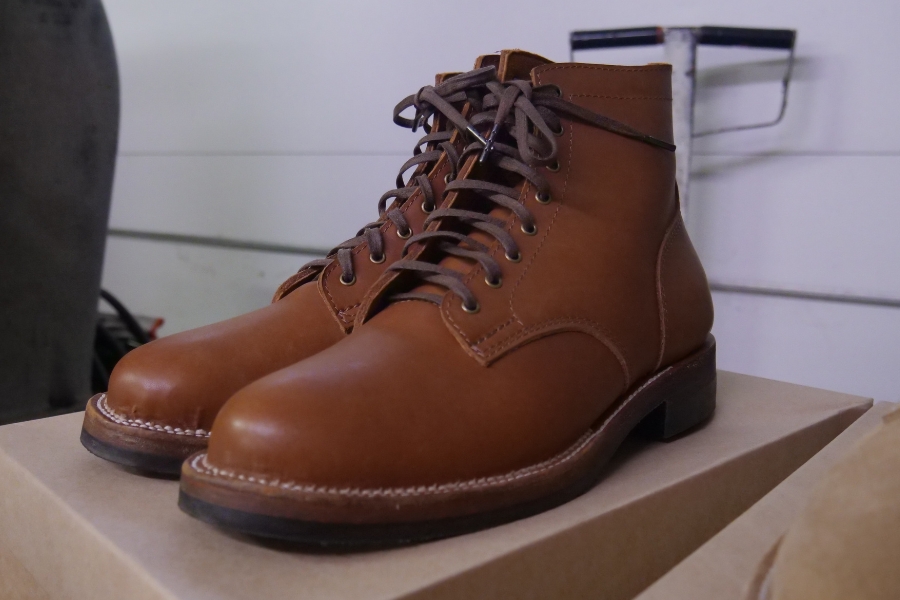
Resources for Learning Shoemaking
SW: What resources did you find helpful?
Dave: Blogs like Arno’s Shoes blog and Stitchdown. Forums like r/cordwaining, One and Awl, and Stitchdown’s Discord. YouTube channels like Unsung House, Brian the Bootmaker, Terry Kim, and Lisa Sorrell.
Big brands like Nick’s and White’s also post detailed process videos that are invaluable, and I consumed a lot of videos from cobbler channels like Trenton and Heath. Cobblers will always remind you that their skillset is distinct from shoemakers.
SW: I love hearing you credit Lisa Sorrell’s YouTube channel because I’ve heard her credited in workshops all over the world. Bagus at Sagara Bootmaker in Indonesia cited her as a huge part of developing his skill. Her channel and Marcell Mrsan’s.
Dave: Absolutely. Lisa’s channel is like an encyclopedia of bootmaking. A lot of small brands might not exist if it weren’t for her.
Startup Costs for Becoming a Shoemaker or Bootmaker
SW: Let’s talk about startup costs. One thing that makes your shop stand out is that all of your boots are stitchdown construction, not Goodyear welted.
You told me before we started recording that part of the reason you opted for stitchdown is the cost of machinery.
If I were starting with nothing, I’d probably want to have about $15,000.
Dave: Yes. Any outsole stitcher machine — like a Landis 12 or a Rapid E — can perform a stitchdown stitch. You might need to make a small modification, but you can find these machines all over the country. A crummy one might cost $700, and a real nice, working one is about $2,500. I paid about $1,000 for mine, and it works great.
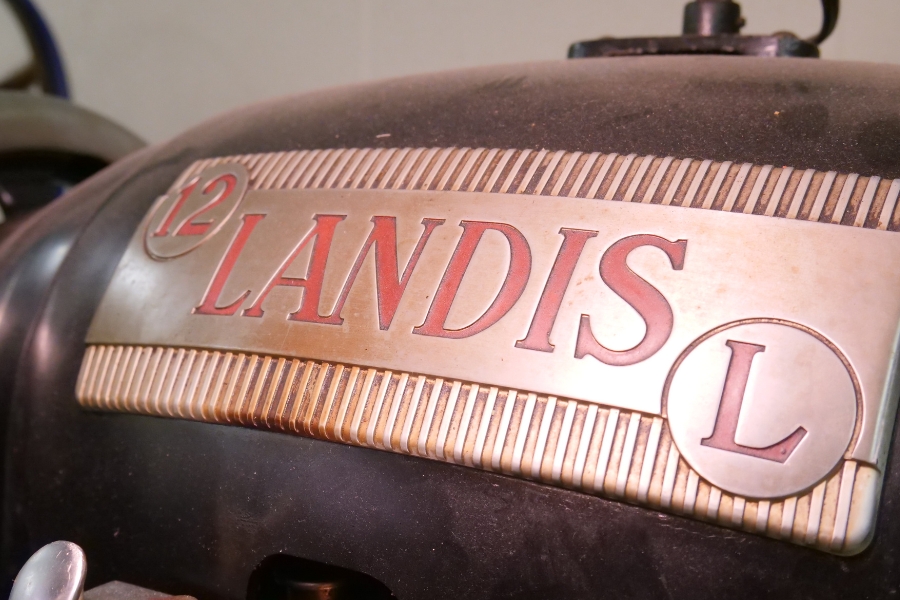
Compare that to a Goodyear welting machine, which, if you can even find one, will be $10,000 or more. I can think of maybe five places in the entire US that use them.
SW: The scale for shoemaking goes from a million-dollar factory all the way down to a stool, an awl, a knife, and a hammer.
Oldspeed is a one-man brand, but it’s not as low tech as some Asian workshops I’ve visited, who often hand welt instead of using machines.
For an operation like yours that’s neither prehistoric nor high tech, what did you need to buy?
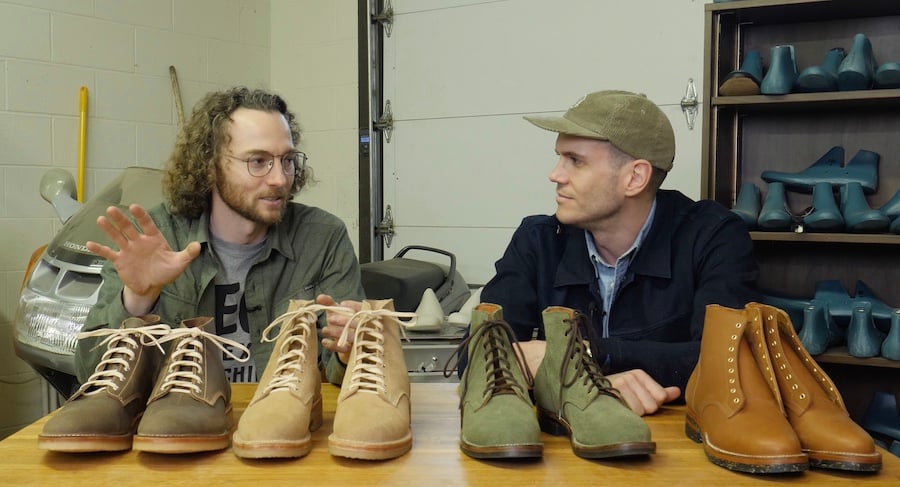
Dave: If I were starting with nothing, I’d probably want to have about $15,000.
That would cover a full run of lasts, your patterns, and materials like leather and soles. You can do a lot by hand and borrow the necessary machines.
Assuming you don’t have help from a cobbler shop like I did, here’s what you’re going to buy. Some of what I have is optional, but the main stuff you need is:
- Outsole stitcher (eg. Landis 12): $1,000 – $2,500
- Belt sanding machine or a line finisher
- Post bed sewing machine: ~$800 used, ~$1,800 new (“it’ll hold its resale value”)
- Hand tools (lasting pliers, shoemaker’s hammer, nails, punches)
- A run of lasts (“I bought some, customized them, and had them digitized in Leòn“)
- Materials like leather and soles
I’ve also picked up:
- Clicking machine: ~$500 (“if you live near a major metropolitan area you might get one for even less”)
- Clicking dies: Cookie cutter-like pieces of metal to help you select pieces of leather, these reduce the time for clicking (“These reduce the time for clicking a pair out from 45 minutes to, like, one and a half minutes”)
SW: How do you get lasts and patterns? How much of that design are you doing?
Dave: The way I did it was I bought lasts, customized them — sanding off parts here and adding leather there to create the exact shape I wanted — then sent them to a factory in Mexico to digitize. There are a few in Leon.
From there, I worked with a pattern maker. My first run cost about $2,500 for 38 pairs of lasts, plus a few hundred dollars for patterns.

SW: What surprised you once you got started?
Dave: The community. Whether online forums, Discord groups, or directly emailing experts like Lisa Sorrell, people are incredibly generous. The industry is struggling in the U.S., so there’s a real spirit of helping each other keep it alive.
Editor’s note: I’ll paste Dave’s favorite resources again:
Blogs for Learning Shoemaking
Forums for Learning Shoemaking
- r/cordwaining
- One and Awl
- Stitchdown’s Discord
YouTube channels for Learning Shoemaking
- Unsung House
- Brian the Bootmaker
- Terry Kim
- Lisa Sorrell
- Marcell Mrsan
- Trenton and Heath
- Nicks Handmade Boots
- White’s Boots
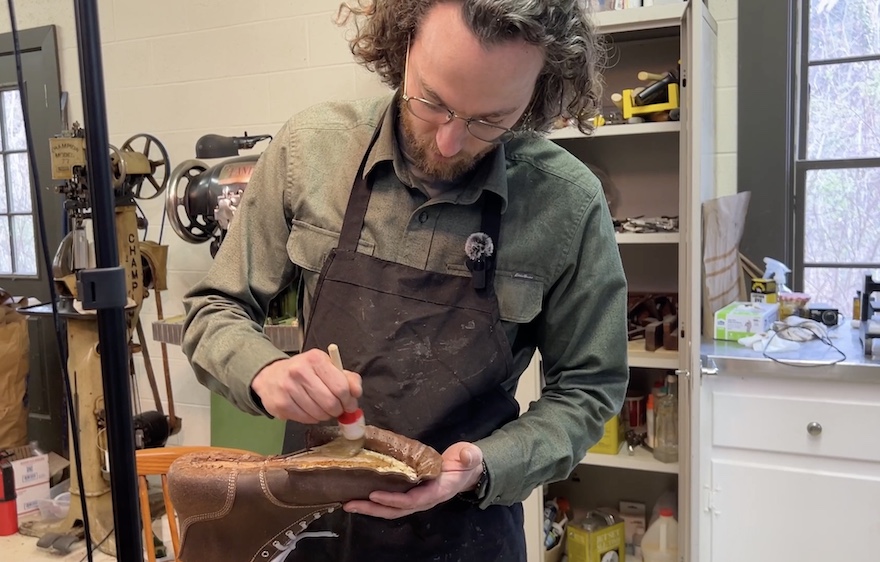
SW: Let’s shift gears. What did your fiancée think when you said you wanted to quit your job and be a shoemaker?
Dave: I’m engaged, and it helps to have a spouse with a good job! But honestly, the reaction from friends and family was overwhelmingly positive as soon as I made that first pair. Everyone was blown away that I could make something that actually looked and functioned like a shoe. The support was huge. When I said I wanted to do this as a career, the response was, “That’s amazing, you should do it, and I want to buy a pair!”
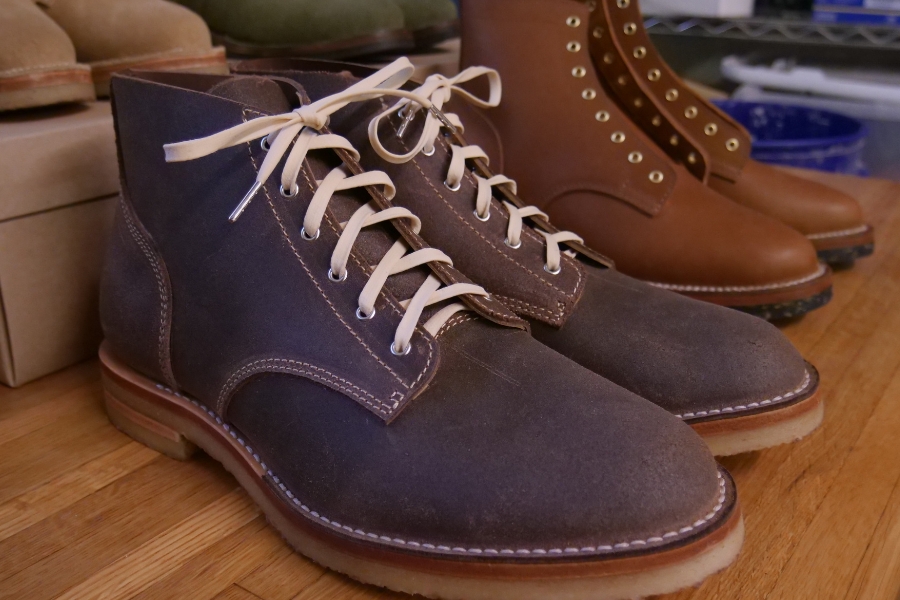
SW: That’s great. I think Americans are particularly encouraging about starting small businesses. I’m from Australia, and people are more risk averse there.
Dave: In this area of the country (Pennsylvania), people are especially encouraging of small businesses and working with your hands.
Of course, some people will say you’ll ruin your life or never make money.
But compared to starting a restaurant or laundromat, shoemaking requires far less capital and space. You can literally do it in a garage.
SW: And you’re contributing to keeping the craft alive.
Dave: I hope so. Customers love that their boots are made locally, ethically, and by someone they can actually meet. My goal is to offer something people can trust in a market full of disposable shoes.
SW: Old Speed Manufacturing — handmade, durable boots from Pennsylvania, check out his website and Instagram.

